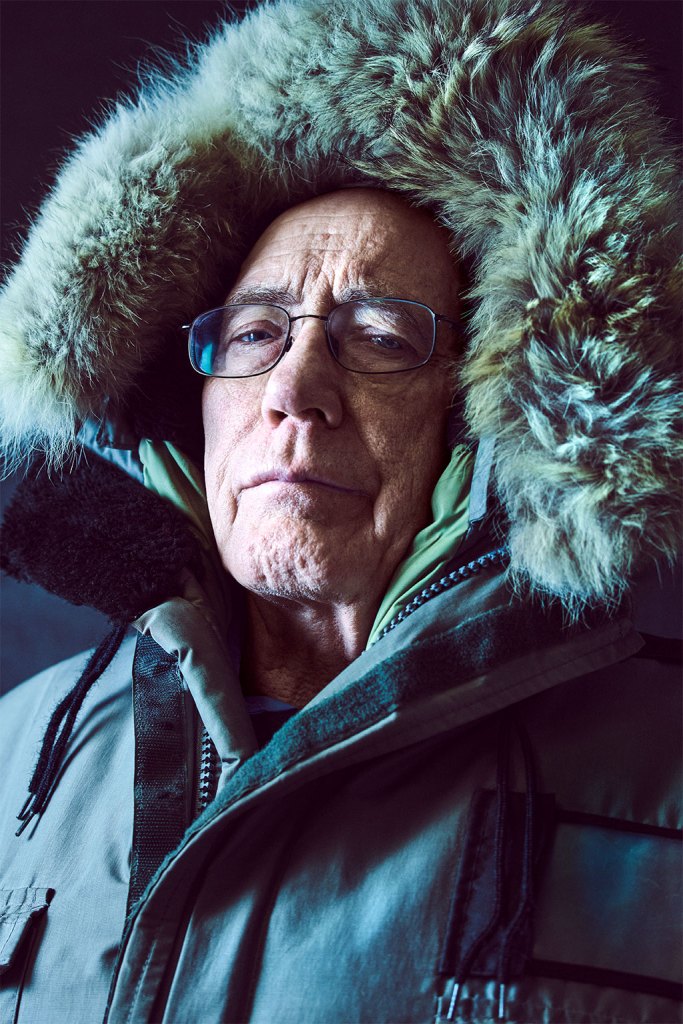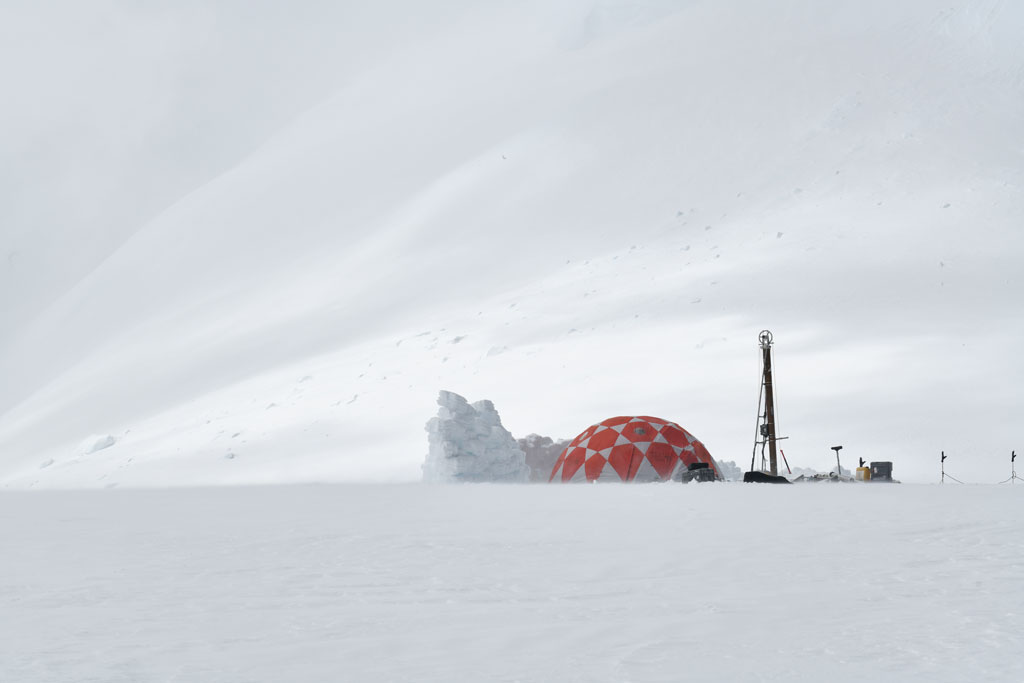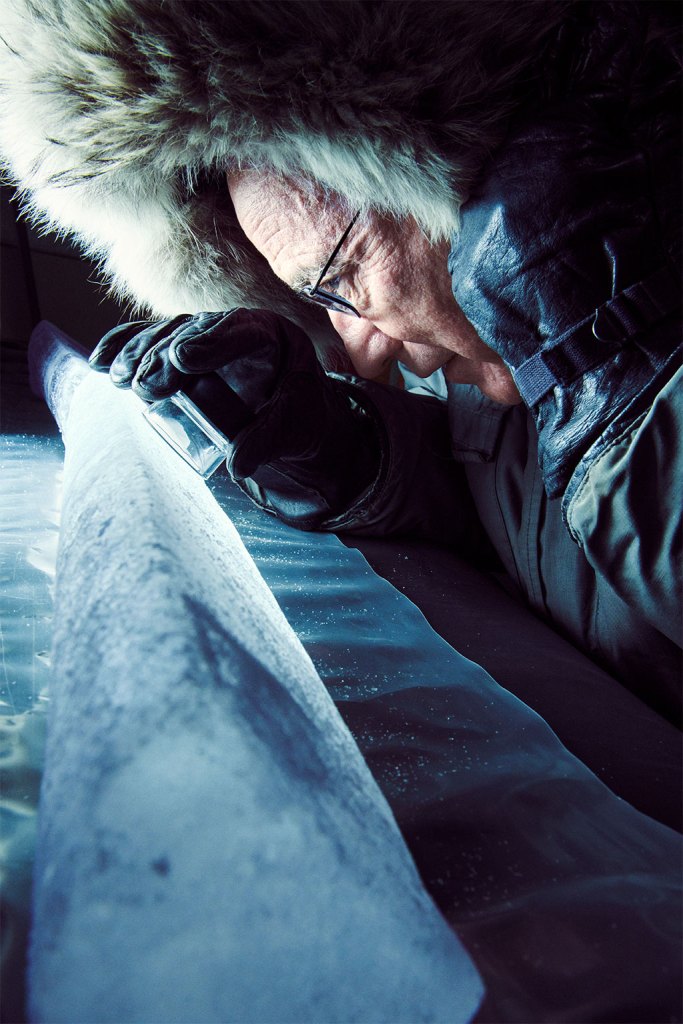A version of this story appeared in the summer 2020 issue of Uncommon Path.
In August 2019, standing on an icy saddle between the two peaks of the highest tropical mountain on Earth, 71-year-old Lonnie Thompson watched the fires burning in the Amazon basin below. To the north and south, the paleoclimatologist saw the jagged peaks of the Andes, bright white with shades of blue, above the veil of smoke rising through the passes from the smoldering fires. The rain forest to the east and farmers’ fields to the west were obscured by a blanket of haze. “It’s amazing when you are up at 20,000 feet how far you can see, especially at night,” says Thompson, who spent 10 days at this elevation.
Thompson and his team were in the midst of a two-month expedition on Peru’s Mount Huascarán in the Cordillera Blanca range. Their goal was to drill the highest ice cores ever recovered from the Southern Hemisphere, an extraordinary undertaking that required 125 scientists, researchers, climbers and porters, as well as 6 tons of equipment, including a 10,000-pound solar-powered drill. The resulting four ice cores, two from the 19,849-foot-high col between the north and south peaks and two from the 22,205-foot summit, could hold the secrets to more than 20,000 years of history—both climate and human. Due to its high elevation and frigid temperatures, Huascarán has the last tropical glaciers on Earth with historical data uncompromised by melting. But it’s only a matter of time. For the glaciers and for Thompson.

Paleoclimatologist Lonnie Thompson has spent five decades studying climate change. (Photo Credit: Jay Kolsch)
Thompson is among the most prominent of the generation of climate scientists who essentially discovered climate change, and his body of work—more than 7,000 meters of mountain ice cores in the Byrd Polar and Climate Research Center at the Ohio State University (OSU) in Columbus—is literally frozen records of Earth’s history and the data that can be extracted from them. Ice cores are like time lines showing thousands of years of weather, drought, fires, volcanic ash, greenhouse gases, frozen insects and now even bacteria and viruses. The cores are transported and stored in segments about a meter long and 11 centimeters in diameter; collecting them required 74 field expeditions in 11 countries. Thompson estimates that he has spent four years of his life above 18,000 feet, in the “death zone” where the human body struggles to function in the thin air.
While a graduate student at OSU, Thompson took a research position in Antarctica from November 1973 to February 1974. He became so fascinated with the climate history frozen in the ice that he changed his field of study from coal geology to paleoclimatology. At the time, scientists believed the poles were the most important places to study the burgeoning story of climate change. (Indeed, the longest ice-core records from East Antarctica hold some 800,000 years of climate history; a future expedition will attempt to retrieve a million-plus-years-old sample.) But Thompson had a different location in mind.
“I was absolutely convinced there was history in these tropical mountaintops that no one was looking at,” he recalls. “We just had to develop the technology to work at the high-elevation, remote places and then keep the ice frozen and get it back to the freezers.” The scientific community deemed the logistics to drill tropical ice impossible. It took Thompson eight years of stubborn persistence to figure it out.

Ice cores stored at -30°F at the Byrd Polar and Climate Research Center at Ohio State. (Photo Credit: Jay Kolsch)
Over his 50-year career, Thompson has been on expeditions spanning Antarctica, Asia, Europe, South America and Africa, including 32 days on Kilimanjaro’s 19,340-foot summit. And as hard as it is just to get the ice cores, transporting them off the summit and back to Thompson’s freezers in Columbus is its own challenge, one that has involved porters, pack animals, helicopters, a hot-air balloon, freezer trucks and specially insulated shipping containers.
In 1983, Thompson received a National Science Foundation grant to return to Peru’s Quelccaya, then the world’s largest tropical ice cap, with a solar-powered drill he developed with his team and tested in blocks of ice in an OSU parking garage. On Quelccaya, the drill produced two perfect ice cores, each a complete 168-meter time line from the surface to the bedrock. Thompson has now been to Quelccaya 25 times to monitor its rapid retreat. His last expedition, in 2018, revealed that its historic records were compromised: Meltwater could be heard rushing below the surface, blurring the historic evidence. The ice cap has lost more than 40% of its area over the past 30 years.
Near the Quelccaya ice cap, Thompson’s team has seen existing lakes grow deeper and new lakes appear. In March 2006, an avalanche came off the upper part of the Quelccaya ice cap and fell into a lake at the foot of the glacier, causing a mini tsunami. The wave breached the lake’s marine dam and flooded the valley below, drowning 400 alpaca.
“All the tropical glaciers are retreating, and the rate of ice loss is accelerating,” Thompson says. Tropical glaciers, which are smaller and found at lower, warmer altitudes, will disappear first. At one point, Earth had no glaciers and the water level was 120 meters higher than it is now. “What’s different is we now have 7.6 billion humans on Earth, and 50% live half a mile from the ocean,” Thompson says. “All of those people are suddenly at risk as the glaciers melt and sea level rises. You don’t have to have a glacier in your backyard to be impacted. Millions of people are going to be displaced.” Some projections show that by 2050, high tide will cover two-thirds of Vietnam. Bangladesh and Indonesia are already seeing water levels rise. Major U.S. population centers such as Miami, New Orleans and New York City will be hit hard, early.

A drilling site at the colon Huascarán. (Photo Credit: Vladimir Mikhalenko)
For decades, Thompson had dealt with the decreasing functionality of his heart. The severity of the issue became clear in 2009, when he was six weeks into an expedition to Peru’s Copa mountain. He woke up one morning at 20,000 feet to discover that his legs and feet were severely swollen. The ice-core drilling was done, and Thompson agreed he needed medical care. But the only way down was to climb. It took two days to get to a clinic in Huaraz.
When Thompson got home to Columbus, he was told he needed a heart transplant. But he continued to lead expeditions to New Guinea and the Alps until his condition worsened so much that he had no choice but to pause his fieldwork and prepare for a transplant. When Thompson asked his cardiologist if his high-altitude lifestyle had hurt his health, the doctor said it probably added 20 years to his life by keeping him so fit and active. (Thompson’s father died at 41 of heart-related issues.) Thompson’s family was hardly surprised by his insistence that he would continue going to high altitudes after his transplant in 2012. “I thought it was fantastic,” recalls Ellen Mosley-Thompson, his wife, who is also a pioneering ice-core scientist and professor. “This is his life’s work. We had no doubts that he’d go back into the field.”
Since the transplant, Thompson has taken his new heart on seven expeditions. In 2015, he set a world record for the highest elevation achieved by a heart-transplant patient when he went to 22,000 feet on the Guliya ice cap in Tibet—a record that seems unlikely to be broken. But the clock is still ticking. “At some stage, we all have to come to grips with age,” he says. He had faced a moment of self-doubt last summer when he gazed from his tent at the 60-foot-tall ice cliff his team had to climb on Huascarán, considered the most difficult climbing on the entire mountain. “I said, ‘Benjamin, I’m not sure I can do that,’” Thompson recalls telling Felix Benjamin Vicencio, his guide. Vicencio replied, “Lonnie, one step at a time.” And he did it.

Thompson inspects an ice core from Tibet’s Puruogangri ice cap. (Photo Credit: Jay Kolsch)
Now, after the hundreds of papers he has published and the dozens of expeditions he has led, the ice is melting faster than ever. About a decade ago, Thompson’s daughter, Regina, an executive for the FBI, said, “Dad, one more ice core is not going to change the trajectory we are on.” She encouraged him to tell his story to reach more people. A documentary in production, Canary, will show the incredible effort he has made to understand Earth’s past. (REI is a partner in the film.)
“If I were to look back a hundred years from now on the data sets we will have created, people may reinterpret them, but those data sets will still be used,” Thompson says.
That archive of tropical ice cores is, he notes, one of a kind, never to be replicated. “Very soon, the only history of tropical glaciers will be in textbooks, in photographs of where the ice used to be. Your children won’t be able to look up and see a glacier-capped mountain range, like the Cordillera Blanca or the Alps. Those glaciers will have disappeared.”


